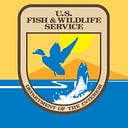Community-Based Conservation Renews Hope for the Cantor’s Giant Softshell Turtle’s Comeback
The Cantor’s giant softshell turtle was once found in great numbers from Bangladesh to the Philippines. But this giant turtle species — reaching an impressive 6.5 feet and 110 pounds — is now critically endangered and was thought to have vanished from Cambodia by 2003. Hope for the species re-emerged when Conservation International (CI) discovered a remnant population along a short 30-mile stretch of the Mekong River.
Now the Wildlife Conservation Society (WCS) is taking the lead and continuing the on-the-ground efforts started by CI to work with local communities to save this unusual and spectacular species from extinction. This summer, the U.S. Fish and Wildlife Service’s Combating Wildlife Trafficking Branch traveled to Cambodia for a site visit to see the current project activities supported by our agency.
An Ambush Predator with a Bone-Crushing Bite
The Cantor’s giant softshell turtle, also known as the frog-faced turtle, has a broad head, small eyes, and snorkel-like snout. It only lives in freshwater, lacks a hardshell, and only surfaces about twice a day to take a breath. Mostly dining on shrimp or fish, this softshell turtle ambushes its prey as they swim past. Concealing itself under water by burying under the sand, it snatches its prey just as quickly as a frog shooting out its tongue to catch a fly. In fact, it’s been described as one of the fastest striking animals in the world and has jaws that can crush bone.
Communities are Banding Together to Conserve these Amazing Turtles
Five hours outside of Cambodia’s capital city of Phnom Penh lies the town of Kratié. Here along the Mekong River, WCS is working with three villages to protect and revive the Cantor’s giant softshell turtle. The small fishing villages depend mostly on fish, chicken, and rice, and have very little in the way of material possessions. This particular area of the Mekong in Cambodia is considered to have the richest biodiversity in Southeast Asia. It serves as critical habitat for many species including this softshell turtle and the critically endangered Irrawaddy Dolphins.
CI and WCS have developed education programs and community-led nest patrols to protect the Cantor’s giant softshell turtle. These conservation efforts aim to minimize threats to survival, including hunting and illegal trade for turtle meat, eggs, and derivatives for traditional medicine, and the illegal capture for the pet trade. Actively engaging local communities through education and protection initiatives is key for these conservation efforts to be successful.
During our visit, WCS instructors presented to 45 students. Lessons like these are designed to inform students about the religious and conservation significance of the softshell turtle. This particular lesson included information about the turtles, their habitat, threats to the species’ survival, and what children should do if they see someone collecting eggs. The students were attentive and engaged in the lesson and participated enthusiastically, raising their hands to answer the instructor’s questions and excitedly received workbooks at the end.
Also in attendance at the school were two community nest protectors and the village chief. For this project, there are actually eight nest protectors who search for and find nests, record nest locations and information on the eggs, and help with turtle releases. If eggs are found and determined to be in unsafe locations, they are relocated until they hatch.
A Big Conservation Impact So Far
WCS does about three releases each year but with more hatchlings there will be four to five this year. One of the larger releases occurred on World Turtle Day where hatchlings were released with community members, the village chief, a Buddhist monk, and about 100 children. During our visit, we also had the fortunate opportunity to participate in one of the turtle releases with several community members, including children. Thirty-one juvenile turtles were released that day bringing the total number of reintroduced Cantor’s giant softshell turtles to 1,005 for the year! Since 2017, approximately 1,500 hatchlings have been released by WCS and the local communities.
Next Steps for the Wildlife Conservation Society
WCS will be advancing their work in this area to engage with local communities in the turtle protection program and instill in these communities the importance of this species. Other activities WCS aspires to lead or take part include continued nest protection, improved policy and management plans for turtles and other biodiversity in Cambodia, training for enhanced law enforcement capacity, and projects that create alternative livelihoods.
For a species which was thought to have been lost, the community conservation efforts that have been ongoing for the last several years have renewed the prospects for a comeback of the Cantor’s giant softshell turtle.
This story was written by Jenell M. Walsh-Thomas, an American Association for the Advancement of Science (AAAS) Science and Technology Policy Fellow working with the Combating Wildlife Trafficking Branch of the International Program of the U.S. Fish and Wildlife Service.
